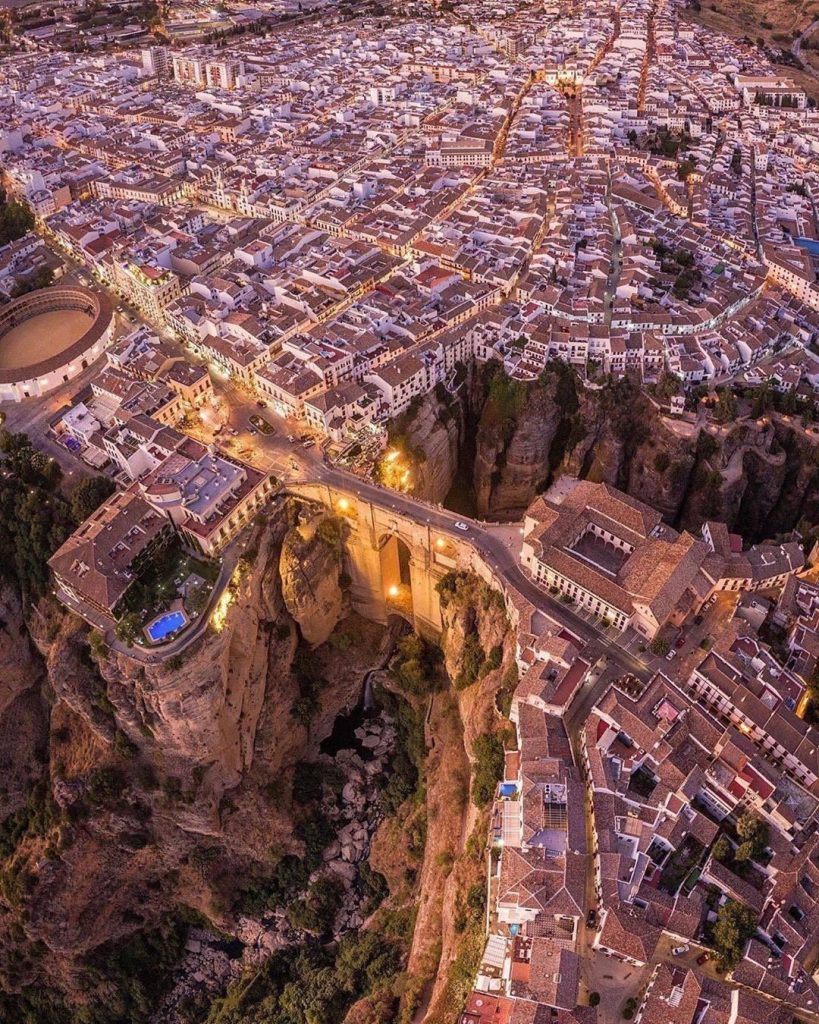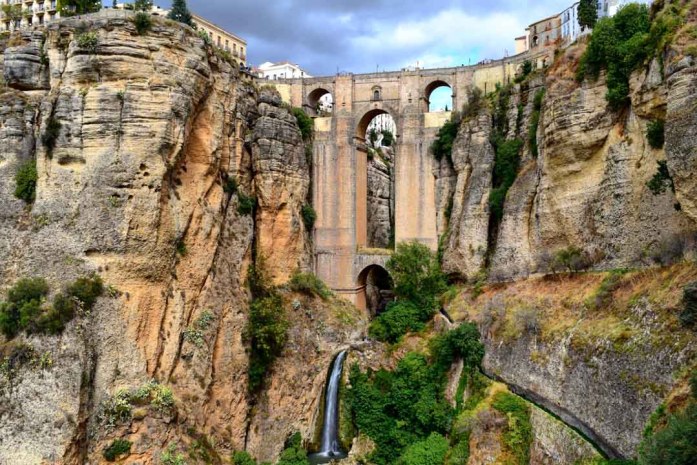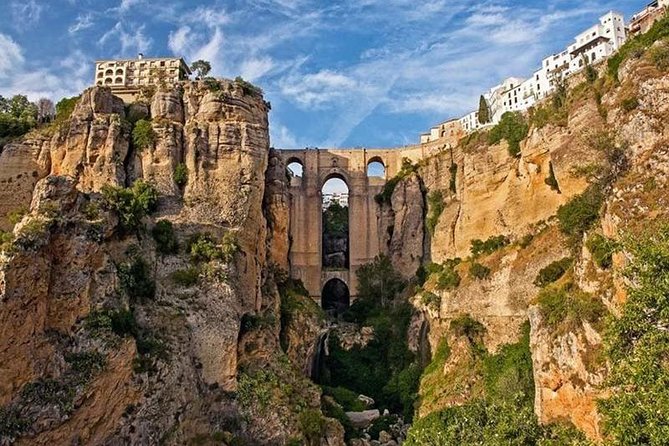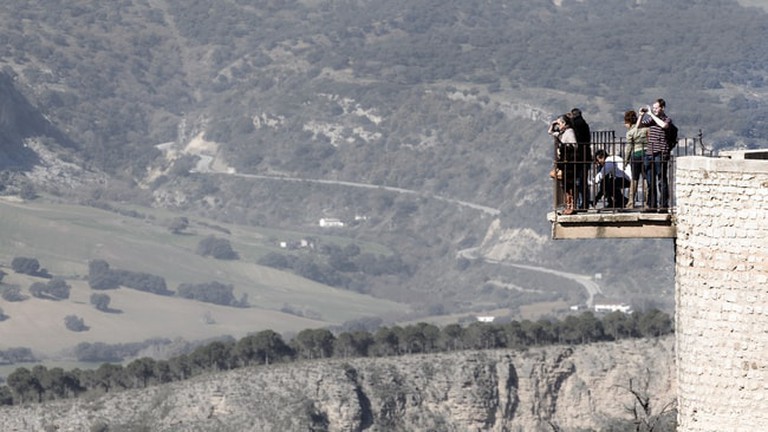The town of Ronda, located an hour away from Benahavís, looks as if someone had suspended it over a steep cliff.
To speak of Ronda is to speak of unparalleled cultural, natural and scenic resources, of wine and oil tourism, of gastronomy, of charming hotels and fiestas of all kinds.
About Ronda wrote Ernest Hemingway, Rainer María Rilke, Orson Welles, Juan Ramón Jiménez, Gerardo Diego, Alberti, García Lorca, to name just a few...
The list of artists and intellectuals who have praised Ronda throughout history seems endless. Few destinations in the world can boast the natural beauty, the richness and uniqueness of its historical and cultural heritage, in which its historic-artistic site was declared an Asset of Cultural Interest in 1966.

It's difficult to list the natural, architectural and artistic wealth of Ronda, and even more difficult to single out just a few of its monuments. However, if anything exists in the collective imagination as emblems of this city, it is the El Tajo and the New Bridge that crosses it, declared a natural monument, built in the 18th century.
This bridge, almost 100 metres high, and its large semicircular arches give Ronda its most characteristic picture.

The town of Ronda, situated in Andalusia, in the province of Malaga, has a specific location - on both sides of the gorge of the Guadalevin river, which automatically created two districts - Ciudad, the Arab part, and Mercadillo, the part created after the Reconquest.
Its location in the mountainous interior, on the edge of the gorge, determined that Ronda passed from hand to hand. In the beginning, there was the Celtic Arunda, which was absorbed by the Roman province of Betika. When the whole Iberian Peninsula came under Moorish rule, Ronda became the capital of the province of Takaruna. It was then called Izna Rand Onda. In the first half of the 11th century, it became the capital of a small state. The city was conquered by Ferdinand III in the 15th century. Ronda is one of the oldest Spanish cities.

The most beautiful and breathtaking point in Ronda is El Tajo, a gorge where the Guadalevin River flows.
On the one hand, it's a spine-chilling place - the gorge is over 100 metres deep - and on the other, it feels like being back in the 15th century.
You can admire it from the cliff of the city or from the suspended above the soil of the 8th century New Bridge - Puente Nuevo. As a fun fact, we should consider the fact that in the central gap of the bridge there is sort of a window. In the old days, there was a prison there, from which it was impossible to escape, due to the specific location. The New Bridge joins together two rocks, on which two cities were built - the mentioned Arab La Ciudad and the newer, Christian El Mercadillo.

Strolling along you’ll pass a number of balconies that hang precipitously over the edge of the Tajo gorge. These are known in Spanish slang as “Balcons Coños”, because when you look down you’ll want to exclaim “Coño!” (which literally translates into a very rude word in English). Step onto one yourself and you’ll see why.
Ever since Roman times, the rugged scenery around Ronda has been used for wine-making. This part of Andalusia is called the Serrania de Ronda, and is particularly known for its delicious reds, although the region also produces whites and rosés. Alfonso de Hohenlohe and Federico Schatz were the first to decide to create their own wineries in Ronda. They were followed by many others. Nowadays, many of these new wineries in the Serranía de Ronda are integrated in the DDO Málaga and Sierras de Málaga.

Geological diversity of soils, altitude and more than 2,700 hours of sunshine per year forge the character of the wines from this mountain range in Malaga. Wines with a great display of aromas and personality that we invite you to taste.